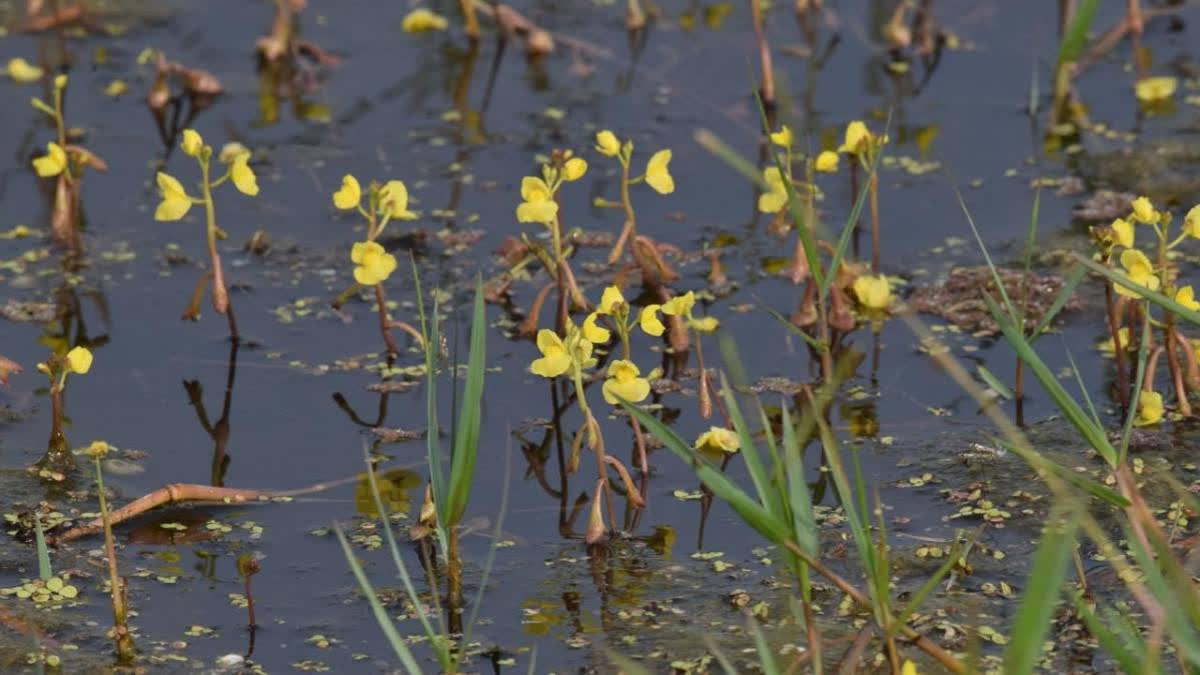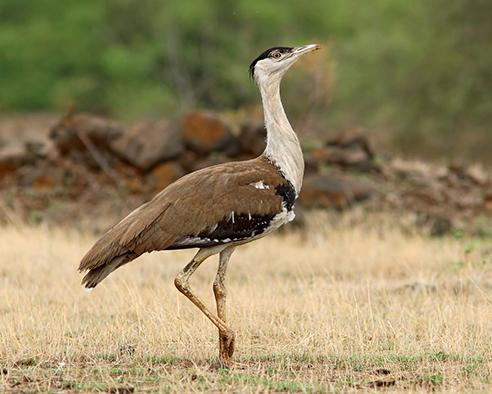Rajasthan Switch to Hindi
Utricularia Found in Keoladeo National Park
Why in News?
Recently, a rare and unique carnivorous plant, 'Utricularia,' has been discovered in Rajasthan's Keoladeo National Park.
- Commonly known as bladderworts, this plant is typically found in regions like Meghalaya and Darjeeling.
Key Points
- Role in Biodiversity:
- Experts believe the presence of bladderworts in the park enhances biodiversity and positively contributes to the ecosystem of Keoladeo.
- Utricularia plays a vital role in maintaining environmental balance by capturing small insects.
- It was last discovered in India in 2021 in the Mandal Valley of Chamoli, Uttarakhand, after a 36-year gap.
- Feeding Mechanism:
- The plant entraps creatures such as protozoa, insects, larvae, mosquitoes, and tadpoles in its bladder-like traps.
- Once trapped, the organism dies inside the bladder.
- Terrestrial species of Utricularia thrive in soil filled with water, where they capture small swimming creatures.
- The plant entraps creatures such as protozoa, insects, larvae, mosquitoes, and tadpoles in its bladder-like traps.
- Ideal Growth Conditions:
- The growth of Utricularia is due to the abundant water supply from the Panchana Dam, which creates ideal conditions for the plant’s growth.
Keoladeo National Park
- About:
- It is a wetland and bird sanctuary and a UNESCO World Heritage Site located in Bharatpur, Rajasthan.
- Chilika Lake (Orissa) and Keoladeo National Park (Rajasthan) were recognized as the first Ramsar Sites of India in 1981.
- Currently, Keoladeo National Park and Loktak Lake (Manipur) are in the Montreux Record.
- It is known for its rich avian diversity and abundance of waterbirds and is home to over 365 species of birds, including several rare and threatened species, such as the Siberian crane.
- It is a wetland and bird sanctuary and a UNESCO World Heritage Site located in Bharatpur, Rajasthan.
- Fauna:
- Flora:
- The principal vegetation types are tropical dry deciduous forest dominated by Acacia nilotica intermixed with dry grassland.
- River:
- Gambhir and Banganga are two rivers that flow through this National Park


Rajasthan Switch to Hindi
Great Indian Bustards
Why in News?
Researchers spotted 12 Great Indian Bustards (GIBs) at Desert National Park (DNP) in Rajasthan. This provides a major boost to efforts to conserve one of India's most critically endangered species.
Key Points
- GIB Population Status:
- The GIB is critically endangered, with only 173 birds remaining.
- Of these, 128 are found in the wild, and the remaining birds are bred in captivity.
- Besides Rajasthan, the species is also found in Gujarat, Maharashtra, Madhya Pradesh, Andhra Pradesh, and Karnataka.
- Conservation Efforts:
- The GIB was listed as "critically endangered" by the IUCN Red List in 2011 due to hunting, habitat loss, and fragmentation.
- In response, Rajasthan launched a Rs 12.90 crore project in 2013 to conserve the species, focusing on protecting its habitat and improving breeding conditions.
- The project has led to the successful breeding of 45 chicks in two locations, Sam and Ramdevra.
- Habitat Protection and Breeding:
- The birds spotted were born in the wild, mostly females aged three to four years, with some males up to one year old.
- Efforts to protect their habitat include improving grasslands and fencing areas to shield the birds from predators such as desert foxes, cats, and mongooses.
- Milestone in Conservation:
- In 2018, the Wildlife Institute of India, along with the Rajasthan government and the Forest Department, established the National Conservation Breeding Centre in Jaisalmer.
- In October 2024, Rajasthan achieved a milestone when a GIB chick successfully hatched through artificial insemination.
- In 2018, the Wildlife Institute of India, along with the Rajasthan government and the Forest Department, established the National Conservation Breeding Centre in Jaisalmer.
Great Indian Bustard
- About:
- The Great Indian Bustard (Ardeotis nigriceps), the State bird of Rajasthan, is considered India’s most critically endangered bird.
- It is considered the flagship grassland species, representing the health of the grassland ecology.
- Protection Status:
- IUCN Red List: Critically Endangered
- Convention on International Trade in Endangered Species of Wild Fauna and Flora (CITES): Appendix 1
- Convention on Migratory Species (CMS): Appendix I
- Wildlife (Protection) Act, 1972: Schedule I
Desert National Park
- It is situated in Jaisalmer & Barmer Districts of Rajasthan.
- Great Indian Bustards, Rajasthan State animal- Chinkara and State tree- khejri and State flower- Rohida are found naturally at this park.
- It was declared a UNESCO World Heritage Site in 1980 and National Park in 1992.






.jpg)



.jpg)
.jpg)






-2026-web-eng.png)
-2026-mob-eng.png)
.png)


.jpg)



 PCS Parikshan
PCS Parikshan



